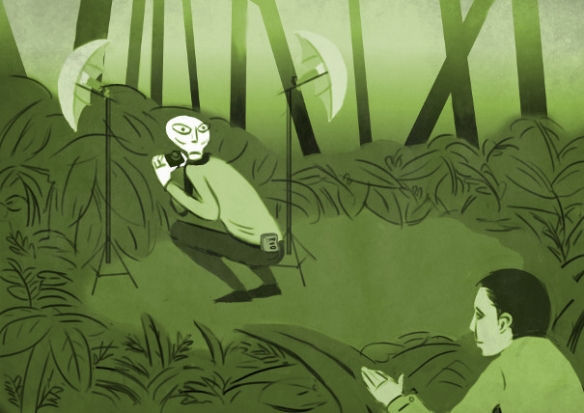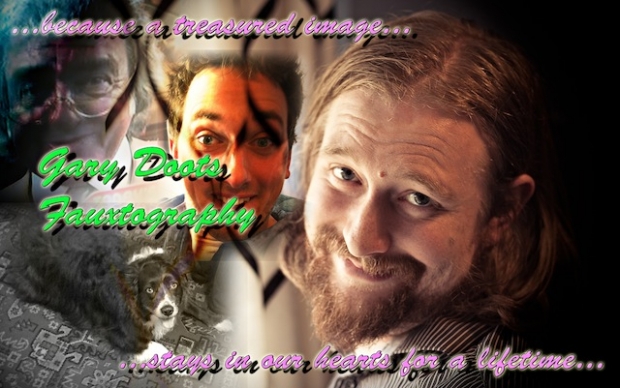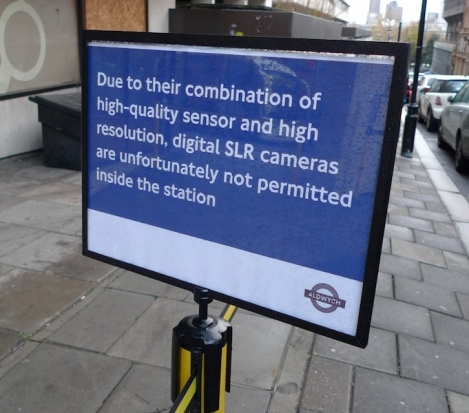
And now on Pixiq, in the latest installment of Dutton's Musings, photographer Gareth Dutton investigates the rise of a dangerous species of human frequently mistaken for an industry professional: the Fauxtographer. Readers are advised that this article contains strong language and should approached with a sense of humour.
Disclaimers
Now it’s important to throw in a few disclaimers and make some important distinctions here. I do not consider myself to be some kind of extreme photography super-being, moulded into human form by the very hands of the Gods of Photography: in fact I recently investigated the concept of self-critque and the need for evaluation and improvement. The kind of photography I admire is leagues and leagues ahead of anything I’ve ever produced, and is something I aspire to be able to match in terms of quality following many, many more years of hard work, effort and self-evaluation. With this in mind, this is not a column simply being used as a vehicle to look down on people with less talent than me (not that I consider myself of particularly exceptional talent).
This isn’t an article to disparage, condescend to, or discourage new photographers, either – everyone begins at the bottom and works their way up. I applaud anyone who has a love of photography and works hard to improve their craft. Finally, I like to think of myself as a photographer before anything else, but I still have respect for those to whom photography is a business first and an art from second, provided they back it up with a professional product / service and knowledge of their craft. This is an article to identify a menace that affects any photographer trying to make a living in the current environment.
The beast in question
With that clarified, I will now identify the creature known as 'The Fauxtographer' by its defining characteristics. The Fauxtographer is a parasitic creature of which there are many classes, but they all share common, easily identifiable traits: they are born when they notice a competent photographer making money from their images and conclude 'I can have a go at that.' Much like the common head louse, the incubation period of the Fauxtographer can often be as short as one to two weeks. Off they pop to buy a dSLR, whack the settings to auto, and carelessly snap away. They spend a ludicrous amount of time working on their bio and their marketing strategy to work out how they might sell the atrocious abomination of light they end up with. The Fauxtographer can often be found greviously abusing Adobe Photoshop and is genetically incapable of understanding the concept of subtlety.
In fact, for the purposes of your elucidation and to help you spot a Fauxtographer in the wild, I have provided a handy example of the banner ad you might find emblazoned across the website of the specimen in question. Be warned, you might require sunglasses, a sickbag, or both:

More often than not, the Fauxtographer actually believes it is creating something with which it could approach a customer wearing a completely straight face. It’s not fully known whether the beast‘s astonishing lack of self-awareness is a universal trait or one exhibited by specific species of Fauxtographer. To dig deeper into the genetic makeup and behavioural traits of the Fauxtographer, we will initially focus on a particularly common and harmful breed, the Wedding Fauxtographer.
The Wedding Fauxtographer
Fortunately, we have a case study for you today, thanks to the magic of YouTube and the somewhat farcical television show Judge Joe Brown (oh America and your crazy TV – we’re secretly slightly jealous that something so ludicrous would never be commissioned this side of the Atlantic). It’s quite a long clip, so I will point you to the important moments.
- 3:20 – when asked what speed her lens is, the fauxtographer in question replies with 'I don’t know.'
- 4:43 – the horrible photos in question, to the amusement of the 'jury'. All the hallmarks of mind-breakingly ugly fauxtography are on show here – selective colouring, stupid filters, a cruddy cut and paste job situating the faces of the bride and groom in front of a background of flowers for some reason and, most importantly, a basic lack of technical and artistic understanding of how to take a photo. The Fauxtographer goes on to avoid the question 'What ƒ-stop did you use?' several times because the beast clearly had no idea what Joe was asking it.
The Wedding Fauxtographer is one of the most dangerous species of Fauxtographer currently known to entomologists, as their potential to damage their surrounding environment is arguably the greatest. First, the Wedding Fauxtographer manages to simultaneously ruin a significant moment in the lives of at least two people and likely their families, too, as well as charge them for the privilege. Furthermore, if family members in the wedding party had passed on since the event, this especially galling, even infuriating.
Second, the Wedding Fauxtographer (although this is applicable to any Fauxtographer) damages local business. In areas with a significant Fauxtographer infestation, the skilful, talented photographer charging a reasonable price for quality work is undercut by the Fauxtographer. This is due to the Fauxtographer charging peanuts for work that looks like it’s been conceived, photographed, and post-produced by a drunken monkey.
The unsuspecting victim is drawn in using marketing non-words and phoney titles the Fauxtographer has obtained from some worthless three day course, such as 'Supreme Explosive High Wizard of Photosmithery'. It sounds impressive but is, in fact, complete, unadulterated, purified, distilled toss.
Treatment and removal
So what can be done to eradicate this infestation? Sadly, it seems the rate of reproduction may be too rapid to make a significant impact on their numbers, but there is a way to improve the situation in your local area: ensure you charge a reasonable price for your photography. If there is a Fauxtographer near you peddling cheap twaddle, do not attempt to match its price. Instead, you must maintain your rates. This will help educate the typical customer and create a distinction between what you do and what the Fauxtographer is doing. In time, the old adage 'you get what you pay for' will ring true in their ears and customers will come to you for your images, your service and your prices. Not only that, it will alter the perception of what is considered a reasonable rate in the eyes of the customer.
Are they really that dangerous a creature?
Whilst it is undoubtedly entertaining and amusing to spend an hour perusing the worst of the worst output created by these horrific hominids, it is my belief that they are a genuine pest, requiring fumigation. I’m mostly speaking metaphorically, there. Mostly.
Putting the silly, painfully extended metaphor aside, people who saturate the market with poor quality images and carefully crafted marketing nonsense to dupe customers into buying into their product are utterly loathsome: it gives photography a bad name and puts us in a bad light. Any photographer worth their salt would rather create something they can be proud of and value it accordingly than to peddle cheap and nasty wares to the uninitiated: the customer relies on us and trusts us to do a good job.
Once, when I was particularly struggling for money, I accepted a wedding reception photobooth gig: it was an easy job for an easy paycheque. However, when I got there, the business owners didn’t know a damn thing about photography or what equipment they had, except that it was the cheapest they could get away with. When I started adjusting the aperture and shutter speed, they nearly had heart attacks and shrieked: 'Don't touch the settings! Our mate has them set just right.'
I had landed in the Fauxtographer’s den and was assisting in propagating their species – these were people who were posing as professionals to make an easy buck out of the uninitiated.
They asked me back for further gigs, I turned them down. Some of you might find that insane, given that I was struggling with my bills, but that wasn’t photography to me, and it wasn’t the reason I pick up a camera every day and take photos.
I am not a Fauxtographer, and I never will be. If I am ever in dire need of extra cash, I‘ll do something more honest, like go door to door selling vulnerable old people insurance policies they don’t need.
Illustration by the very talented James of Sweet Meats Illustration.






